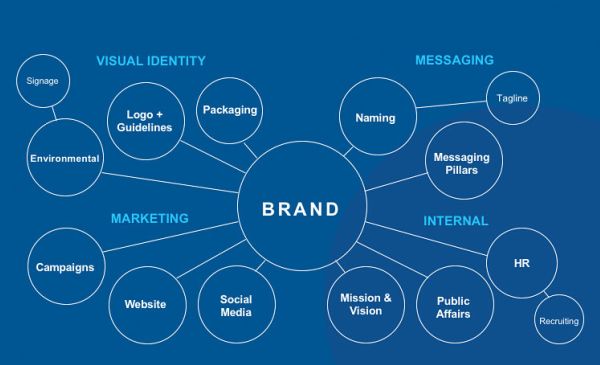Today we take a deep dive into the brand management process, exploring the various responsibilities and offering practical tips and strategies for managing your brand effectively. Whether you’re a seasoned brand manager or just getting started, you’ll find valuable insights and guidance to help you take your brand to the next level.
What is a Brand Management Process?
The brand management process is a crucial element of any successful business and involves everything from defining your brand strategy to executing campaigns and maintaining brand consistency. With so many moving parts, it can be challenging to manage a brand effectively.
Here are some brand priorities to consider.

Why is a Good Brand Management Process Important?
In today’s competitive business landscape, having a strong and recognizable brand is more important than ever before. It is more than just a logo or a tagline – a brand is the embodiment of a company’s values, culture, and vision. A well-managed one can help create positive associations with customers, build trust and credibility, and ultimately drive revenue growth. This is where good brand management comes in – it creates, develops, and maintains all the elements of a brand to ensure that it is consistent, relevant, and impactful to the intended audience.
One of the key benefits of brand management is that it helps to create brand awareness and loyalty. A consistent brand identity across all touch points can help customers easily recognize and remember the brand, leading to increased brand awareness. In turn, this can lead to greater customer loyalty as customers develop an emotional connection with the brand, making it more likely that they will choose the brand over its competitors.
In addition to creating brand awareness and loyalty, brand management also provides a competitive advantage. A strong brand that is differentiated from competitors can help a company stand out in the marketplace and can lead to increased market share and revenue. By carefully selecting a brand position that provides marketplace advantages, a company can create a brand that resonates with customers.
Another important aspect of brand management is that it builds trust and credibility with customers. A consistent brand image and messaging can create a perception of reliability and consistency, which can lead to increased trust from customers. This trust and credibility can lead to stronger customer relationships and increased customer retention, which in turn leads to increased revenue.
A good brand management process is critical for creating a positive and lasting impression of a brand, which can help an organization achieve its business objectives and long-term success. With a strong brand, companies can differentiate themselves from competitors, build trust with customers, and ultimately drive revenue growth.
Strategic Brand Management Process Steps
Effective strategic brand management involves a series of steps that are designed to help businesses develop and maintain a strong brand identity that supports their marketing goals. These steps can be broken down into several key phases, each of which is critical to the overall success of the process.
Here are the key steps:
- Identifying/defining your most important customers
- Understanding what motivates your customers and what could cause them to choose your brand over your competitors’ brands
- Carefully selecting a brand position that could provide your organization with marketplace advantages
- Translating that position to a strong and consistent brand identity, including:
– Intuitive brand architecture
– Strong name and icon
– Tagline that succinctly reinforces brand promise
- Developing brand messaging including an elevator speech
- Educating employees about the brand promise, elevator speech and identity standards and giving them the incentives, tools and training to become effective brand champions
- Developing an integrated launch and ongoing marketing plan
- Reinforcing your brand’s promise at each point of customer contact
- Measuring the ongoing equity of the brand and making adjustments as necessary
Brand Management Responsibilities
Effective brand management involves a range of responsibilities. With so many moving parts, managing a brand can be a complex and challenging task if you don’t know exactly what you should be monitoring and tracking.
Brand Management Checklist
Get a clearer understanding of the key responsibilities involved in brand management and how to approach them in a strategic and effective way with our checklist.
- Monitor, measure and manage brand equity/strength
- Increase brand awareness, relevant differentiation, value, accessibility and emotional connection
- Develop brand plan
- Monitor progress against brand plan
- Be responsible for results against brand plan
- Drive brand understanding and support throughout the organization
- Champion/drive initiatives that support delivery of the brand promise
- Brand messaging – elevator speech, tagline, campaign themes, proof points, etc.
- Manage the brand architecture
- Maintain brand identity consistency
- Chair the brand identity council/team/board
- Help determine identities for new brands/sub-brands
- Anticipate and accommodate new brand identity needs
The Blake Project Can Help: The Brand Positioning Workshop
Branding Strategy Insider is a service of The Blake Project: A strategic brand consultancy specializing in Brand Research, Brand Strategy, Brand Growth and Brand Education




